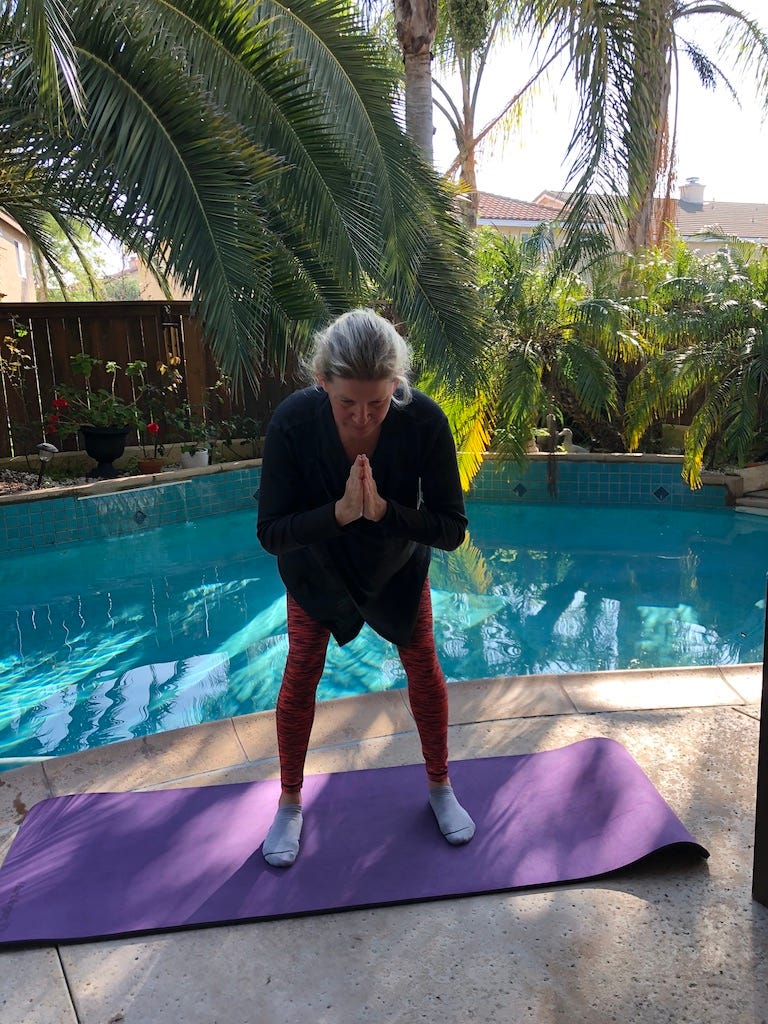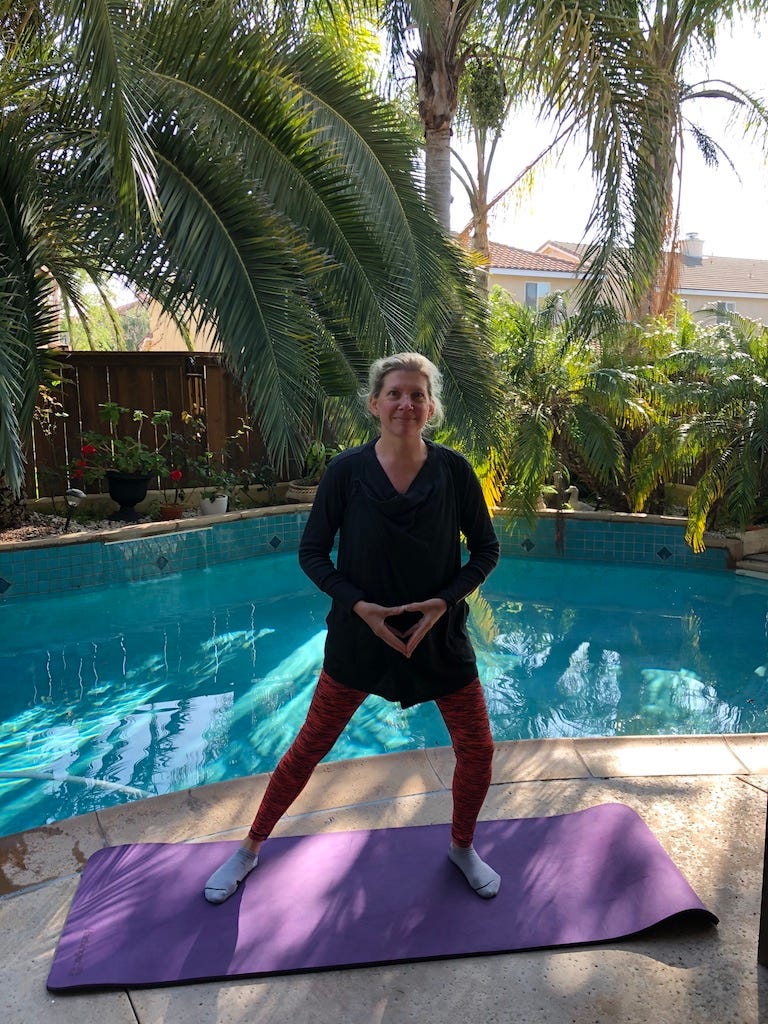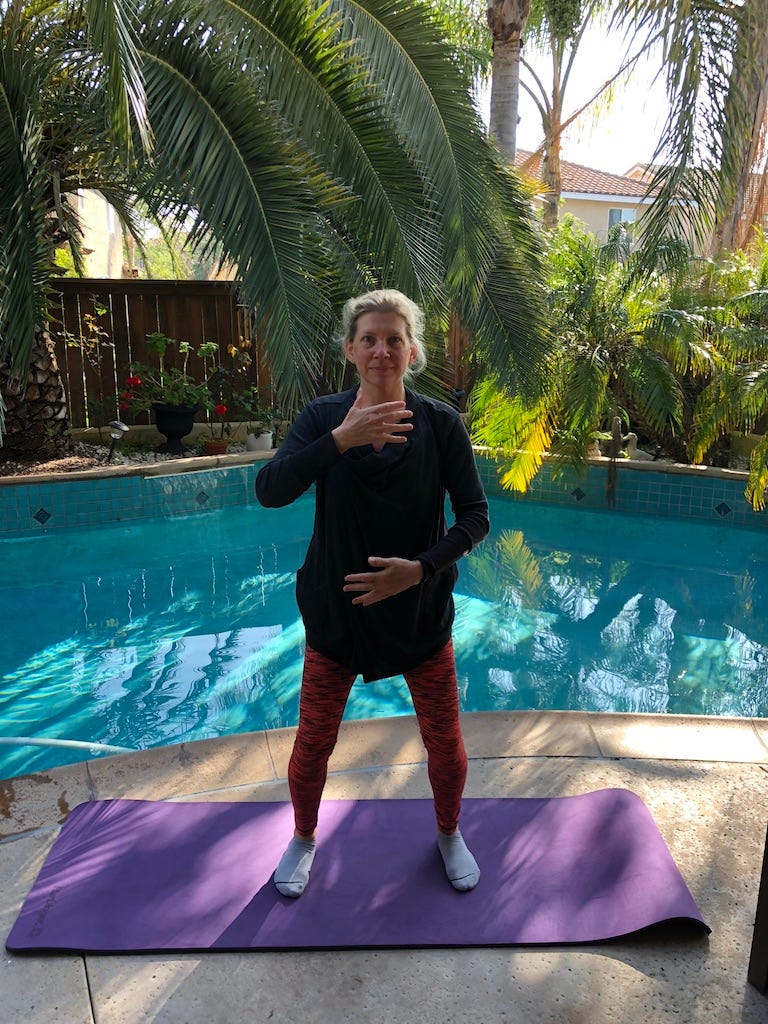Hello friends —
With all that's going on in the world, coupled with challenges we all face in our personal lives, it can be difficult to feel peaceful. I've learned to be intentional about seeking greater peace over the years, as I wrote about in Time for Reflection.
For me, my deep anchor is the Spirit of Jesus. For others, they may call it something different — especially if they have a background of spiritual abuse, which is something I know a bit about.
Each day of life I feel wholly dependent on the Divine Spirit in order to move through my days with as much purpose and peace as possible. With my intermittent PTSD, I've looked for and found additional ways to help myself and cultivate that peace amidst the complexities of modern life.
I have several peace-focusing practices that I do each morning. I'll share in another post about the things I read and my writing practice, but today I'm sharing about Qigong, an ancient Chinese meditative movement practice.
Qi or Chi = energy
Gong = work or practice
So Qigong (Chi gong) is working with energy. You may have heard of Tai Chi. Qigong is similar but focuses more on simple specific movements for certain body organs and energy systems. Tai Chi is more of a whole body flow movement. They are both powerful and healing.
I had heard of Qigong years ago, as I've always been a curious researcher of health and wellness topics. When I had an unexpected and difficult 10-day hospital stay and colon resection surgery in July of 2019, I was looking to add more healing practices to my life upon returning home. Through a roundabout connection, I found Jan, my Qigong teacher, and began attending her weekly class. Qigong is very approachable; you don't have to be bendy with incredible balance and core strength to do it (although it can help with those things over time). We had men and women in class of all ages and abilities, and one older woman sat in a chair for the class.
Qigong is not about perfection or holding strength poses. It's about flow and enjoying the movement of energy in a meditative way.
As someone who believes in the power of prayer, I call it prayerful movement or meditative movement. And it's a time when I focus in on my body and its energy and engage with the Spirit in an intentional healing way. Sometimes I bring others into my heart during the movements and meditate on their healing too.
I felt the beneficial flow quickly in that first class. Jan guided us through the simple warmups. There is a lot of tapping/slapping of energy points. (If you've ever been to a Chinese massage studio, you'll know what I mean.)
We then went through the Five Elements practice — simple hand movements to move energy that may be stuck. The class ended with a 20-minute guided meditation. I found tears streaming down my face during the meditation, as I must have been releasing some fear, trauma, anxiety and stress. I also loved that there was no sense of being observed or critiqued in the class. You are simply encouraged to do the movements as they feel best to you while breathing in and out through your nose. And I kept my eyes closed for better focusing and meditation.
Since beginning Qigong two and a half years ago, I practice daily for about 20 minutes each morning in the backyard. I tend to have a scattered brain, so I relish this time of peaceful focus even if I catch myself wandering in thought. I just guide myself back to concentrating on the movement.
Sometimes I will add in a guided meditation on days when I'm feeling especially rattled — like this past weekend. I try also to incorporate some movements in between tasks throughout my day.
The Moving of Yin Yang has long been a favorite of the Five Elements movements. If I'm stressed or over-stimulated, I do this one for a few minutes. I also do this movement along with prayer to prepare for the intuitive and medium sessions I offer for clients. After a session, I practice this movement to reground and release energies I may be holding for another person.
I'm including a link below (5 minute segment) for this wonderful movement. This video is from Qigong Master Chunyi Lin of Spring Forest Qigong, where my teacher received her training. You can sit, stand or even lie down when doing it. Or you can even just visualize it in your mind if moving your arms isn’t an option — I’ve done this movement in my mind while sitting in the dentist chair, for example.
(Also, if you are interested in the class Jan offers online, newcomers can attend the first class for free. Just let me know if you are interested.)
No matter your spiritual background, this practice can be an addition to your faith. It integrates beautifully for me as a follower of Jesus and expands my understanding of the Spirit’s mighty work in my life. I sense that this eastern practice is tapping into the powerful creative flow of God and the Source of our very breath.
“To be spiritually minded is life and peace.”1
For peace and healing,
Jen
Romans 8:6







Thanks for sharing bout Qigong. I don't know a lot about East Asian practices, but I know they have good results.
Lovely to read your presentation of Qigong. I especially liked it when you said "Sometime I bring others into my heart during the movements and meditate on their healing too." It makes it more than just a personal practice.